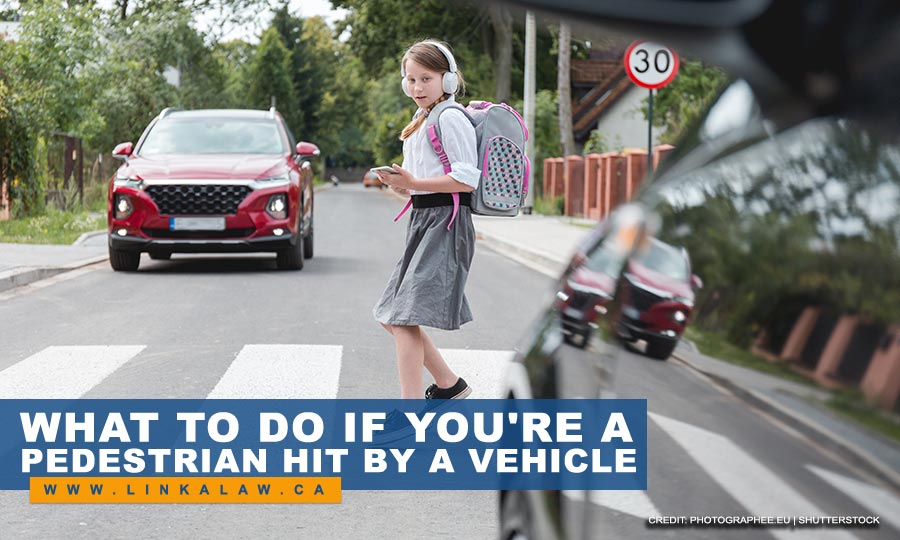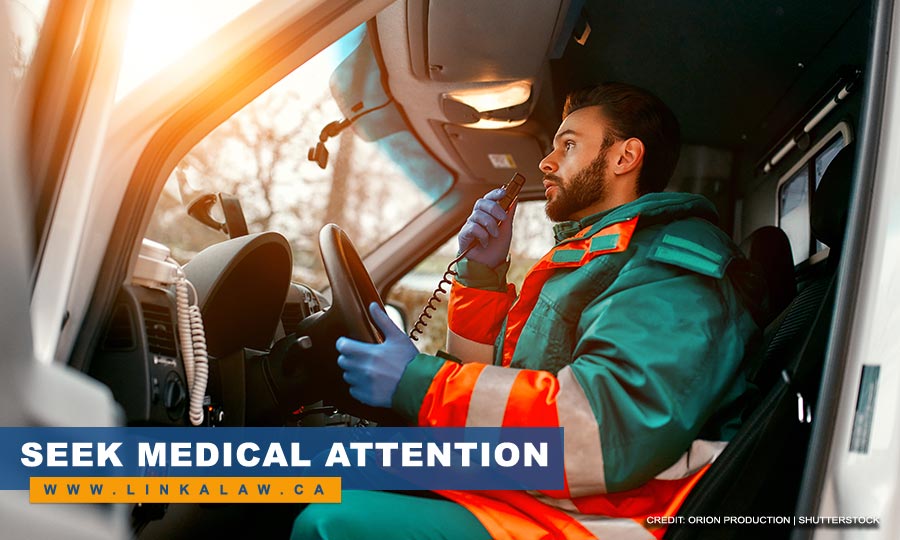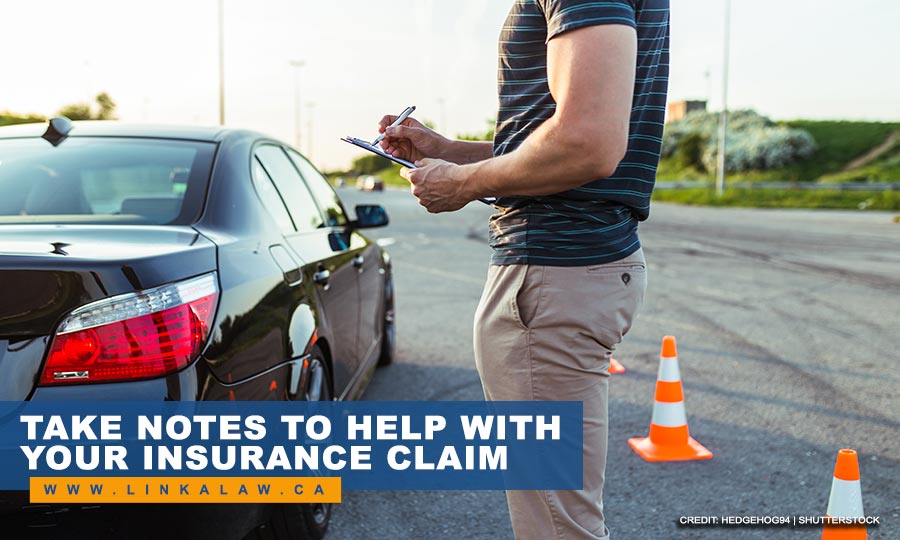March 31, 2022
What to Do If You’re a Pedestrian Hit By a Vehicle

While you may enjoy a long, relaxing stroll, it’s important to remember that walking down the street can often be just as dangerous as driving a motor vehicle. Make sure you’re keeping an eye out for any reckless drivers or other hazards that may cross your path while getting your dose of exercise.
However, some pedestrian accidents are unavoidable, and it’s important to know what to do to ensure your safety and legal rights after you are struck. Here’s some advice on what to do if you’re a pedestrian in a car accident:
Get Medical Assistance ASAP

If you’re conscious after being hit by a vehicle, you are responsible for getting yourself the medical attention you need. The physical and emotional shock that you will most likely be recovering from post-accident may cloud your judgment and your ability to feel pain and recognize injury. Call 911 for immediate help and get a full medical evaluation. If you’re unable to call yourself, ask a bystander to do so for you. Denying or refusing medical treatment can undermine your claim heavily, as the insurance company will jump at the chance to argue that your injuries weren’t caused by the accident.
Injuries most common to pedestrians include:
- Cuts, bruises, and scrapes to the head, face, and hands
- Traumatic brain injuries, such as a concussion
- Spinal cord injuries
- Torn and sprained ligaments
- Fractures to arms, legs, hips, and pelvis
Document Your Injuries
Upon contacting medical services, make a personal list of your injuries and report them to the paramedics as soon as they arrive.
You should ask yourself the following questions:
- What areas of your body hurt?
- Do you have any visible injuries?
- Are any of your clothes torn? If so, torn garments may indicate a part of the body that is injured but may not currently be in pain.
- Is there any blood on your face, head, or extremities? You might be bleeding, but your body might not be able to process the accompanying pain due to shock.
Gather Evidence

It’s wise to make notes listing the events that led up to the accident, as it could be extremely helpful for your insurance claim.
If you’re able to, you should gather the following information:
- Car make, model, and year
- Vehicle Identification Number
- License Plate Number
- Car owner’s name and contact information
- Insurance information
- Pictures and videos from the accident scene
- Witnesses
However, you may not be able to remember the information or have anywhere to write it down. In this case, the police officer on the scene will get the driver’s license, address, phone number and insurance details, as well as the vehicle information for the accident report.
Prove Driver Fault for Your Accident
Pedestrian injuries can be severe and expensive. Make sure you get fair compensation for your medical bills, lost wages, and pain from the driver who hit you. While pedestrian injuries are covered by the driver’s auto insurance policy, you’ll first have to prove that the driver was to blame for the accident.
Use Evidence to Support Your Claim
First, contact the motorist’s insurance company, report the accident, and file your injury claim. Next, prove that the driver who struck you was negligent and caused the accident.
Ask yourself the following questions:
- Did the motorist break traffic laws or fail to use reasonable care?
- Did I fail to use reasonable care?
- Did the motorist’s actions directly cause my injuries?
- Was the motorist negligent? How?
- Were there other contributing factors to the accident that might relieve one or both of us from fault?
Organize Your Documentation
Well-organized documentation makes for a stronger insurance claim, supporting your case that the driver was to blame for your accident. Your paperwork should include:
- Police Report: If the police were on the scene of the accident, there should be an official report on file. This report will hold a lot of weight with insurance companies, including a diagram of the accident, the investigating officer’s opinion of fault, witness statements, and citations issued to the driver.
- Witness Statements: Witness statements are extremely important evidence, as they are often the deciding factor in findings of fault.
- Driver’s Statements: Make sure you and your witnesses record or write down any statements from the driver that you can remember. Statements such as “I’m sorry, I didn’t see you,” could serve as strong evidence in court.
- Medical Records and Bills: Your medical records, particularly your emergency room admission chart, can tie your injury directly to the accident. Make sure you have copies of your medical bills, as they verify your treatments and how much your injuries cost.
- Lost Wages: Ask your employer to provide you with a written statement of the time you had to take off of work, such as sick leave or vacation days you had to use during your recovery or lost opportunities for overtime pay.
- Clothing: Hold onto the clothing you were wearing during the accident, and don’t wash it. Put the garments in a plastic bag and keep them in a safe place. Your clothing, shoes, hat, or purse can serve as convincing evidence if it’s torn, bloody, or smudged with car paint or crash debris. Additionally, the driver’s insurance should cover your property damage.
- Traffic Laws: Check your province’s specific laws for pedestrians and motorists to see if there were any traffic laws that the driver who hit you violated. Additionally, check to see whether you did violate any traffic laws. Print the section of law applicable to your claim.
Get Professional Legal Help
Motor vehicle accidents that cause serious injury require a reliable car accident lawyer in Whitby or elsewhere in Ontario to make sure that you get the compensation you deserve. If you or a loved one of yours are a pedestrian hit by a car in Ontario, call Michelle Linka Law at (905) 448 – 7810 for a free consultation or fill out our contact form so you can send us your message or questions.

